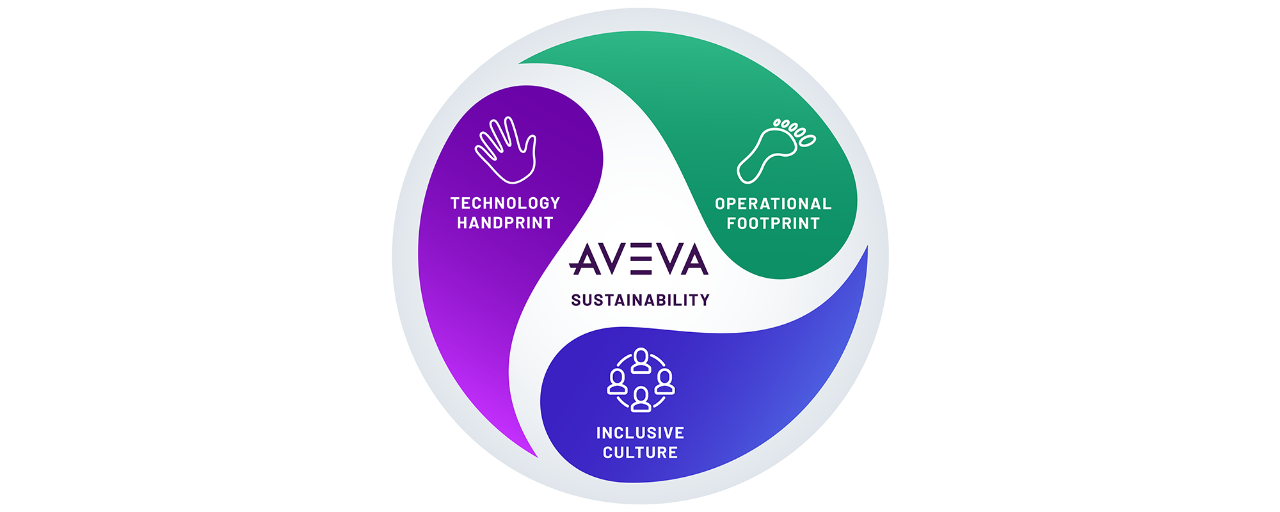Our approach to sustainability
At AVEVA, sustainability has never been higher on the agenda. We are taking actions to embed sustainability into our operations, our culture, and our core business strategy. We are committed to leading on sustainable innovation and to working in partnership with others to make a more just, net-zero world a reality for the next generation. We manage sustainability through the lens of our technology handprint, operational footprint, and inclusive culture.

Leading from the top
Board commitments to Environmental, Social, and Governance (ESG) priorities
Because our commitment to a sustainable future is a holistic one, we are taking a top-down approach to sustainability commitments. We’ve made some changes to our governance model.
Responsibility for ESG begins with our Board of Directors and cascades to our executive leadership and across to various business functions and teams.
